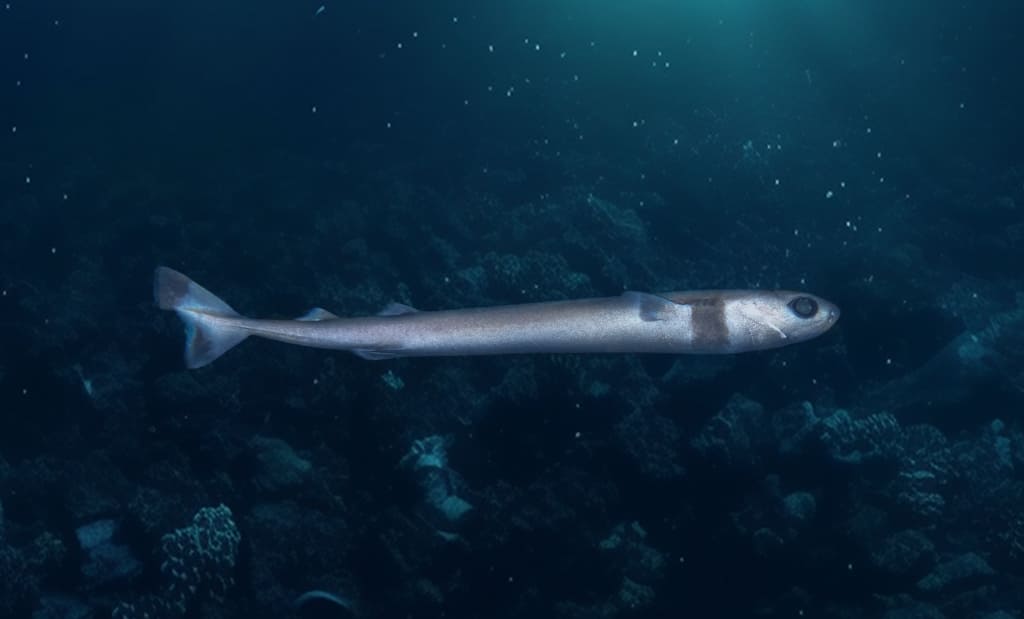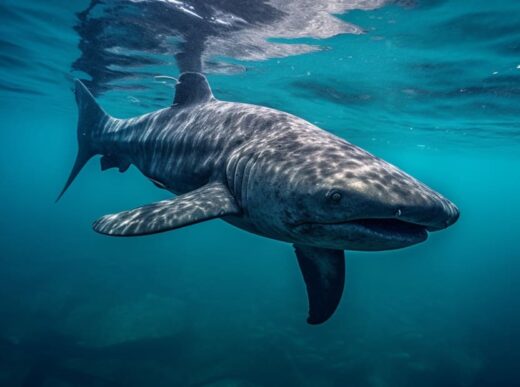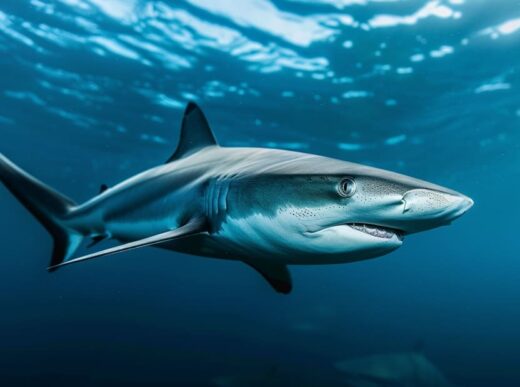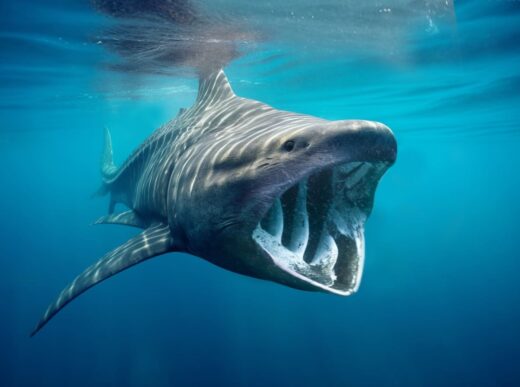Embark on an exhilarating underwater journey with us as we uncover the mysteries of Cookiecutter sharks! Despite their small size, these bloodthirsty predators pose a threat even to giants like whales. Get ready for 20 captivating facts that will illuminate the world of these luminescent sharks in a whole new light.
20 Amazing Facts About Cookiecutter Sharks
Join us on this thrilling journey as we explore the extraordinary features that make these luminescent sharks truly fascinating.
Characteristics
1. Meet the cookiecutter shark – a quirky underwater resident that won’t strike you as your typical fearsome predator. It’s like the pocket-sized version of sharks, barely stretching beyond 50 centimeters.
2. Now, get ready for a jaw-dropping fact! The scientific bigwig calls it Isistius, which translates to «Equal Swimmers.» But, hold on, sailors had a different take on it – they nicknamed it the «Demonic Whale Biters.» Spooky, right?
3. Picture this: a shark that actually glows, living up to its mystical name. What’s the secret? Photophores! These little light-emitting cells cover its belly, casting an eerie green glow underwater.
4. Now, here’s where it gets interesting. This luminous trick isn’t for show; it’s a stealth move. The green glow acts as a cloak, blurring the shark’s outline and helping it sneak up on its unsuspecting prey.
5. The cookiecutter shark is all about that glow, but only on its belly. Its back rocks the usual camouflage vibe, and around the gills, it sports a nearly black wide band.
6. Surprisingly, there are just two flavors of cookiecutter sharks out there. First up, the world-traveling Brazilian shark (Isistius brasiliensis), and then there’s the elusive greattooth shark (Isistius plutodus), deemed quite the rarity.
7. Let’s talk teeth – the luminescent shark may have a small mouth, but don’t let that fool you. Its lower jaw boasts up to 31 rows of sharp teeth, while the upper jaw flexes up to 37. Ouch!
8. Hold onto your hats, folks! These sharks aren’t just about the glow – their dental game is strong too. Big and triangular on the lower jaw, small and razor-sharp on the upper jaw. Oh, and get this – they can swap out a whopping 15 sets of teeth in their lifetime!
Habitats
9. Brace yourself for this oceanic wanderer – the Cookie cutter shark is a globetrotter, calling every ocean home except the Arctic. Now, here’s the twist – you won’t catch it hanging out near shores and beaches. Nope, this fish is all about the open sea and exotic islands.
Lifestyle
10. Hold onto your snorkels for this oddity – these sharks are no fans of horizontal swims. They’re daytime deep-sea dwellers, plunging to depths of up to 3 kilometers. Come nightfall, they rise closer to the surface for a midnight snack.
Eating habits
11. Time for a spine-chilling revelation! Despite their compact jaws, Cookie cutter sharks don’t bother with whole fish. Oh no, they’ve got a gruesome technique. They slice and dice, tearing meat chunks off their prey while on the move.
12. Now, here’s the stuff of nightmares – these sharks come with suction cups on their jaws, turning them into underwater vacuum cleaners. Picture this: they latch onto their target, do a little pirouette, and rip a sizable chunk of meat straight from the victim’s body.
13. Surprise, surprise! Cookiecutter sharks aren’t picky eaters. Their victims include whales and even larger sharks like the mighty white shark. Size doesn’t faze them; it’s all just a meat buffet in their eyes.
Intelligence and Social Behavior
14. Talk about squad goals – Cookiecutter sharks are the social butterflies of the sea. They team up in small packs, launching coordinated attacks from different angles, ensuring their prey is utterly exhausted from blood loss.
Reproduction
15. Mystery alert! The love life of these sharks is still a bit of an enigma. Word on the marine street is that they’re likely egg-living creatures. Rumor has it, their pregnancies are marathon-length, with litters boasting up to 16 tiny fins.
Population
16. Meet the popular kid in class – the Brazilian cookie cutter shark. It’s everywhere, and its population is thriving. Now, the greattooth shark? Not so much. It’s the elusive one, hanging out in a few exclusive spots. But don’t worry, neither of these species is on the endangered list.
Danger To Humans
17. Rejoice! Despite their unique dining habits, Cookiecutter sharks are on the “Not a Threat to Humans” list. Why? Well, they stick to the open ocean, far from your favorite beach spots, keeping human encounters to a minimum.
18. Plot twist! These sharks have a quirky habit of leaving bite marks on underwater vehicles. Scientists suspect they’re drawn to the spotlight – literally. The glow of spotlights and portholes lures them in. Thankfully, they can’t do much harm to deep-sea submersibles.
19. No need to panic – humans aren’t on the Cookiecutter menu. Occasionally, they might get caught up in bottom nets, but hunting them isn’t our jam. And hey, if you’re curious, their meat is on the edible list.
Are There Any Aquariums with Cookiecutter Sharks?
20. Sorry, no oceanarium VIP passes for Cookiecutter sharks. They’re a no-show because, well, they’re not the friendliest roommates. Any other shark in their tank would probably become their dinner. For the best oceanic peep show, head to the Bahamas or off the coast of Brazil to catch these quirky sharks in their natural element.




